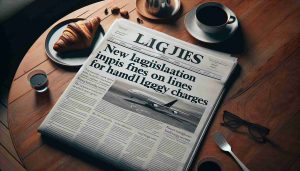OHLA has successfully reached a preliminary agreement with its financial creditors and a portion of bondholders to initiate the financial restructuring of the construction group. The forthcoming crucial step involves endorsement by the banks’ committees and the remaining bondholders. On October 22, the company will conduct a special general shareholders’ meeting to approve two capital increases totaling 150 million euros, supported by key shareholders such as José Elías, Inveready, José Eulalio Poza, Coenersol, Andrés Holzer, and the brothers Luis and Mauricio Amodio, the current major shareholders of the construction company.
The agreement with Santander, CaixaBank, Sabadell, Crédit Agricole, and Société Générale will enable OHLA to secure a new line of guarantees significantly backed by Cesce, potentially valued at 350 million euros, although the exact coverage percentage remains undisclosed.
In exchange for the capital injections, the banks will release a portion of the currently tied-up deposits serving as collateral for existing guarantees. Out of the primary 140 million line, OHLA could potentially access around 100 million initially.
Moreover, OHLA has struck a preliminary agreement with specific senior secured bondholders representing 33% of the bonds due in March 2026. This agreement is subject to the formulation of a ‘lock-up’ contract, currently in progress between the bondholders and the company.
The proposed plan will see the complete repayment of the first bond and an extension of maturity for the second bond until 2030. Negotiations regarding the fixed interest rate, standing at 10.75%, have been contentious between OHLA and the bondholders.
The forthcoming proposal on the capital increases is contingent on approval by the shareholders at the next Extraordinary General Meeting scheduled for October 21 and 22, 2024. OHLA is set to present two capital increases totaling 150 million euros, aiming to attract new significant investors while the Amodio brothers remain the principal shareholders.
A consortium of entrepreneurs has pledged a minimum of 75 million euros, with José Elías contributing 30 million through Excesior Times, José Eulalio Poza investing 10 million via Key Wolf, Inveready managing seven million (via The Nimo’s Holding), Coenersol providing three million, and Inmobiliaria Coapa Larca (INV) adding 25 million, bringing the Consortium of Excelsior’s total contribution to at least 50 million euros. Andres Holzer’s INV will contribute an additional 25 million.
The revitalization strategy for OHLA encompassing the initial 70 million euro capital increase will be followed by a subsequent 80 million euro capital increase, wherein the Amodio brothers will inject up to 26 million euros. These offerings will be priced at 0.25 euros per share, increasing the company’s total share count and capital base significantly.
Key Questions and Challenges in Revamping OHLA’s Finance Structure
As OHLA embarks on a significant financial restructuring journey, several key questions and challenges arise, shaping the future trajectory of the construction group.
Questions:
1. How will the endorsement by the banks’ committees and remaining bondholders affect the success of OHLA’s financial restructuring?
Answer: The approval from these entities is crucial to secure the necessary capital injections and guarantee lines, indicating the willingness of financial partners to support OHLA’s revitalization efforts.
2. What impact will the proposed capital increases totaling 150 million euros have on OHLA’s financial stability and growth prospects?
Answer: The infusion of capital aims to bolster the company’s financial position, attract new investors, and facilitate strategic initiatives for sustainable growth.
3. How will the agreement with specific senior secured bondholders influence OHLA’s debt repayment schedule and interest rate negotiations?
Answer: The bondholder agreement plays a vital role in restructuring OHLA’s debt obligations, outlining repayment terms and interest rate adjustments for long-term financial sustainability.
Key Challenges and Controversies:
1. Contentious Fixed Interest Rate Negotiations:
The ongoing dispute over the fixed interest rate of 10.75% highlights a significant challenge in aligning the interests of OHLA and bondholders, necessitating constructive dialogue for a mutually beneficial agreement.
2. Shareholder Approval and Investor Confidence:
Securing shareholder approval for the proposed capital increases is essential for executing the revitalization plan. Building investor confidence amidst uncertainties surrounding the construction industry poses a challenge in attracting new investments.
Advantages and Disadvantages:
Advantages:
– Enhanced Financial Stability: The capital injections and new guarantee lines offer OHLA a strong financial foundation to navigate potential challenges and pursue growth opportunities.
– Debt Repayment Restructuring: Repayment plans for existing bonds provide a structured approach to managing debt obligations, improving liquidity and financial resilience over time.
– Attraction of Strategic Investors: The commitment from a consortium of entrepreneurs signals confidence in OHLA’s restructuring efforts, diversifying shareholder base and expertise.
Disadvantages:
– Uncertain Market Conditions: External economic factors and industry trends may impact the success of OHLA’s financial restructuring, posing risks to the company’s recovery plans.
– Share Price Dilution: The issuance of new shares at a discounted price of 0.25 euros per share can dilute existing shareholders’ ownership stakes, potentially leading to shareholder dissatisfaction.
– Execution Risks: Implementing the complex financial restructuring plan entails operational challenges and coordination among stakeholders, requiring precise execution to achieve desired outcomes.
For more information on financial restructuring and corporate revitalization strategies, visit OHLA’s Official Website.










More Stories
New Legislation Imposes Fines on Airlines for Hand Luggage Charges
Expanding Renewable Energy Contracts Leads to Legal Accusations
Changes in the Tax System for Independent Workers in 2025